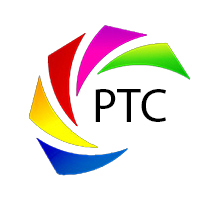Solar Simulation with LEDs and Phosphors
Phosphor-converted LEDs (pcLEDs) can achieve highly accurate solar simulation across the entire spectral range from the deep ultraviolet to the infrared. Compact and low-cost pcLEDs and phosphors are the future of solid-state solar simulation technology. By combining UV/violet and blue LEDs with various phosphors covering the near-UV, visible, and near-infrared parts of the spectrum, it is possible to re-create the solar spectrum. This pcLED approach can also be used to produce tunable solar simulation sources with spectral emission resembling the sun at different times of the day or various elevations in the atmosphere, including extraterrestrial solar radiation from the sun or any other star.
For example, during twilight or sunrise/sunset, the sea level solar spectrum displays a warm white correlated color temperature (WW CCT) and then rises to what we consider as daylight (DW CCT) or cool white color temperature (CW CCT) in mid mornings and afternoons. Various studies have shown that humans, animals, and plants tend to be generally healthier and perform better when exposed indoors to artificial sun lighting with variable CCT. There is also significant energy cost savings that can be achieved with lighting at variable CCTs from tunable LEDs with light output that simulates the daily natural solar cycle.
Solar LEDs have a wide range of applications that include bio-centric lighting, medical/health, hydroponics, and photovoltaic solar cells development. Sun lamp therapy is also a common approach for managing Seasonal Affective Disorder or SAD. Traditional solar simulation technologies are expensive and bulky. With pcLED technology, it is possible to use compact sources of UV/Vis LEDs and integrate them with different phosphors to achieve the full sun spectrum. It is also possible to use a single LED (violet or blue) with an optimized phosphor system to deliver full spectrum Vis-NIR lighting over a wide range of color temperatures from DW/CW (6500K) to WW (<2700K) CCT.

Daylight VIS-NIR solar spectrum achieved using a combination of violet/blue LEDs and phosphors
